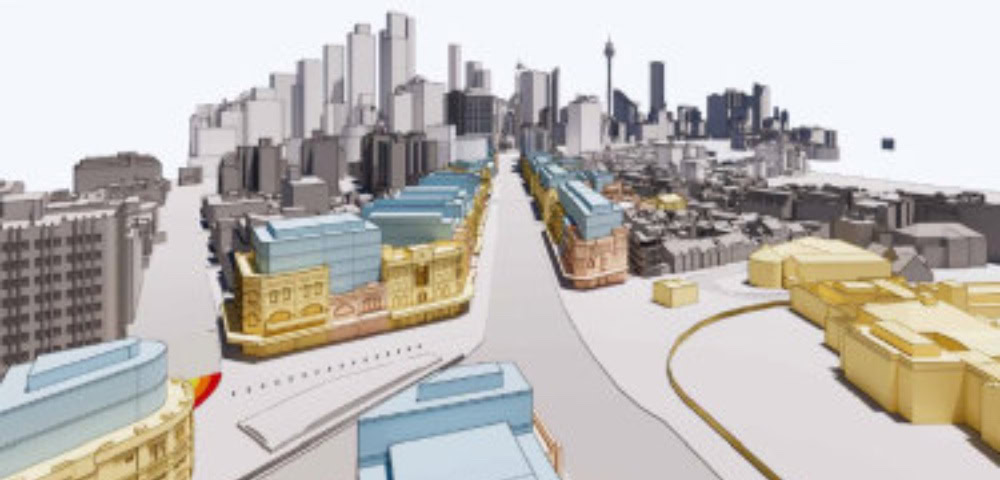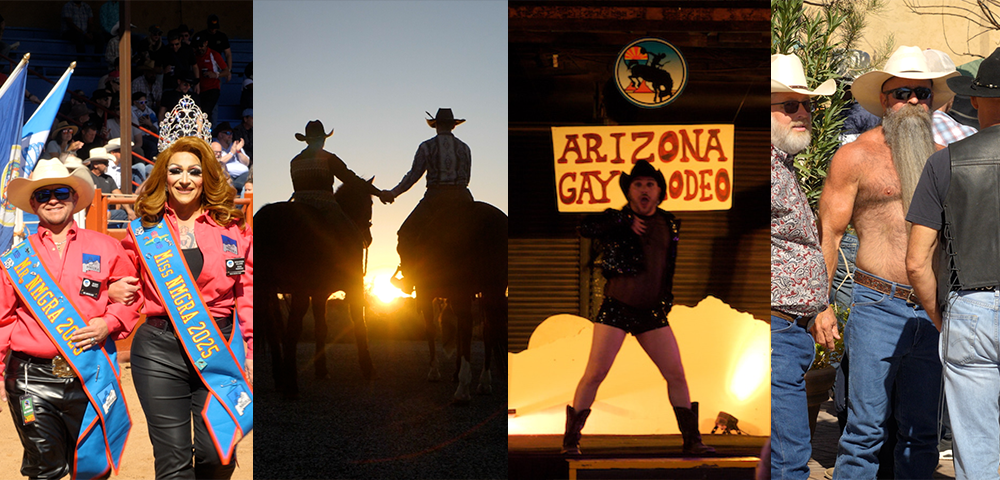
‘New Plans For Oxford Street Risks Doing More Harm Than Good’

By Robert Tait
There is no argument that Oxford Street Darlinghurst is in a very unhealthy state. But the City Of Sydney’s latest Planning Proposal for a Cultural And Creative Precinct is so full of inaccuracies and absurdities that it risks doing more harm than good. The long-term trade-off to property developers of significantly raised building heights for the fanciful return of increased cultural and creative activity risks destroying any hope of Oxford Street returning to the sunny, joyful High Street it once was. Here’s a succinct list of the Proposal’s flaws:
Consultation Process
I took part in one of the November Zoom meetings and it could not in any way be called a “consultation”. There was no chance to properly discuss overall issues, a shockingly racist comment was left unchecked and the short session concluded with a childish “Hot” or “Not” vote on a long set of examples of Facadism. As the Zooms etc occurred at exactly the same time as DAs for the three north-side blocks of Oxford Street were made public, the only assumption is that it was not “consultation” at all but rather a crude manipulation of public attitudes, for a plan that was already in place.
And further proof of that assumption is that while the results of community consultation are listed in the Planning Proposal, NO FURTHER REFERENCE is made to some of the most significant of them! For example, 83% of respondents identified the importance of the LGBTQI identity of Oxford Street, yet other than a few perfunctory mentions of Mardi Gras and World Pride, LGBTQI is never mentioned again! Same with First Nations. So if this grand plan was already in place before the consultation process, the question is for how long? I would suggest that it was formulated BEFORE COVID changed the world, and that its assertions are now dated and its solutions therefore impossible.
The Big Proposal
It’s argued that Oxford Street has declined because of “the loss of flagship stores and other retail outlets since the opening of larger shopping centres and increased trends in online spending. This, alongside the impact of a noisy road environment, underused public spaces and repealed lockout laws have led to a decrease in patronage of Oxford Street.” (Two other reasons are the City Of Sydney’s disastrous early-noughties pavement and awning upgrade, and the appalling maintenance and management of its extensive Oxford Street property portfolio).
And the solution is to “facilitate the provision of cultural and creative space in the precinct by allowing for additional floor space and additional building height”.
“Cultural and creative” is a feel good term, but should be properly defined in such an extensive technical document. Not so; only examples are provided — “live entertainment, performing arts, fine arts and craft, design (fashion, industrial or graphic), media, film and television, photography or publishing, or museums and archives” — so it will be necessary to address them.
Most have been as significantly influenced by COVID as many non-cultural and creative enterprises, in that there has been a massive shift to at-home work. We can expect that this will continue for several years, and that afterwards patterns won’t be anything like they were.

Art galleries are closing in Sydney as well as most major cities in the world; sales have moved on-line, and the current boom area of NFTs needs only laptops to operate. Likewise for design, media, photography and publishing — the utilisation of large, common workspaces is in fast decline.
As for museums, the only suggestion is LGBTQI and that has been well and truly dismissed by the community — and archives, isn’t that just another word for storage so hardly likely to reactivate the neighbourhood? Increasing space in new developments for live entertainment and the performing arts is valid, although could the amount of space required for commercial viability be obtained more than a couple of times? Small cinemas won’t happen, given the ascendance of streaming services during the pandemic.
The reality is that, going forward, there will be LESS demand for cultural and creative space, not more. Meaning a redeveloped Oxford Street will be plunged even deeper into its existential crisis.
The idea of assigned “cultural and creative” space is so last century, the artistic equivalent of a gas-fired power plant.
(Particularly troubling in this discussion is the Proposal’s insistence that any performance for which space has been mandated “does not include that associated with sex industry or adult entertainment uses”. Why not? The sex industry has strong traditional links to Oxford Street and has cultural and creative validity also. The only assumption is that the Proposal entails some kind of puritanical “cleansing” of Sydney’s queer heartland, as a sop to the property industry’s conservative values.)
The Minuses
Having established that the Big Proposal has dubious benefits, its definite downside needs to be delineated.
Oxford Street didn’t gain its iconic status by accident. It didn’t play its part in Sydney’s or Australia’s — even the world’s — rapid change of attitude to queer people by accident. It didn’t offer amazing hope and support during the AIDS crisis by accident. People were the main reason, the local residents, the baristas, bartenders and shopkeepers, but also important was the streetscape itself.
There is no other inner-city Sydney street that is so unthreatening, that has such a sense of freedom, and why is that? Because of its architecture and lay-out — wide, sunny and airy. That will all disappear with shop-heights raised from two or three storeys to four, five or more; there’ll be less light and a smaller sky, and over a hundred years’ of urban magic will be gone forever.
It’s the overall shape of the buildings that matter, not necessarily their frontages. Many facades are interesting but not what could be called elegant or beautiful. Which makes Facadism (a controversial architectural solution anyway) so ridiculous in this case: it throws the baby out with the bathwater, jettisoning the main appeal of Oxford Street’s current built form for some arrogant delusion of improvement.
The Proposal will have huge impact on local residents. Hundreds of people in apartments and houses in Campbell, Goulburn, Riley, Pelican, Poplar, Little Oxford and Sturt Streets will lose sunlight and views, while those in narrow Foley Street will find it not only darker but also noisier.
The Proposal to allow upbuilds in exchange for 10% creative and cultural space is light on logistical detail. It states that rents are now too expensive for creative and cultural activities — so would landlords have to give free or subsidised rents? If Council subsidises rents, what provision is there for marginalised and/or LGBTQI inclusion? Council does not have a good record in this regard, with much of its property on Oxford Street pre-priviatisation staying empty for decades.
One particularly bizarre part of the Proposal is the incorporation of the National Art School’s intention to adapt buildings on its campus for non-creative and cultural purposes, specifically a heterosexual wedding venue. Did no-one pick up on the irony?
NAS is the most significant arts institution in the Proposal’s precinct, yet even it can’t fully occupy it’s spaces! (I say “heterosexual wedding venue” because NAS is where horrific public executions were once held, including that of gay hero Captain Moonlite, and I can’t imagine any self-respecting queers wanting to marry there. It would be like getting married at Auschwitz.)
And finally there is the issue of displacement (no mentioned in the Proposal). If LGBTQI spaces on Oxford Street (including sex-on-premises venues) are replaced by “live entertainment, performing arts, fine arts and craft, design (fashion, industrial or graphic), media, film and television, photography or publishing, or museums and archives” where do they move to? Residential streets? William Street? Crown and Bourke Streets?
It’s so clear there’s been no real understanding of what queer identity entails, which is freedom to behave outside the norm, without an intrusive Council “vision” (which, when it comes down to it, means restrictive regulation).
The Proposal dismisses doing nothing but it doing something results in a far worse outcome then it is preferable. Oxford Street was in a far worse condition in the early 1980s, then it flourished because a bunch of queens (not Council) saw its potential. Who knows what group could do the same again? But one has to allow for that possibility. One thing is for sure, it won’t be property developers. We’ll end up with an absolute wasteland.
Robert Tait is a shopkeeper, novelist and community activist.









